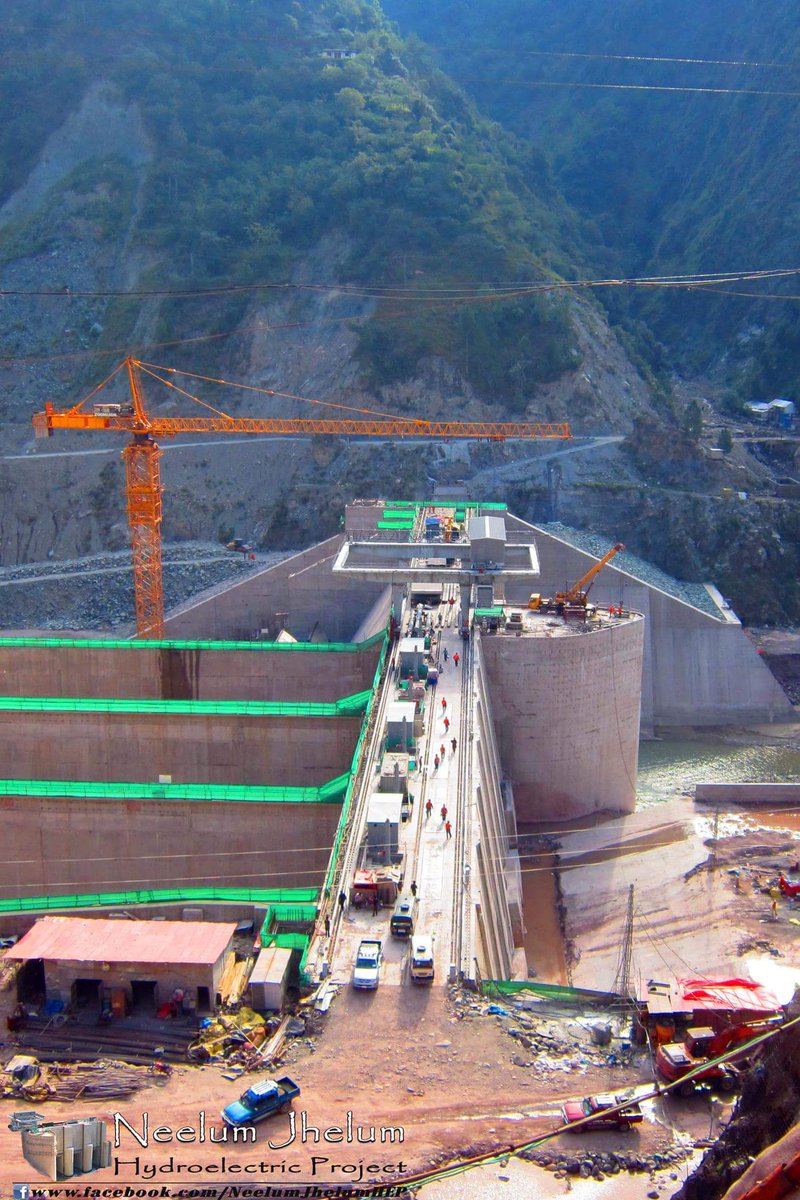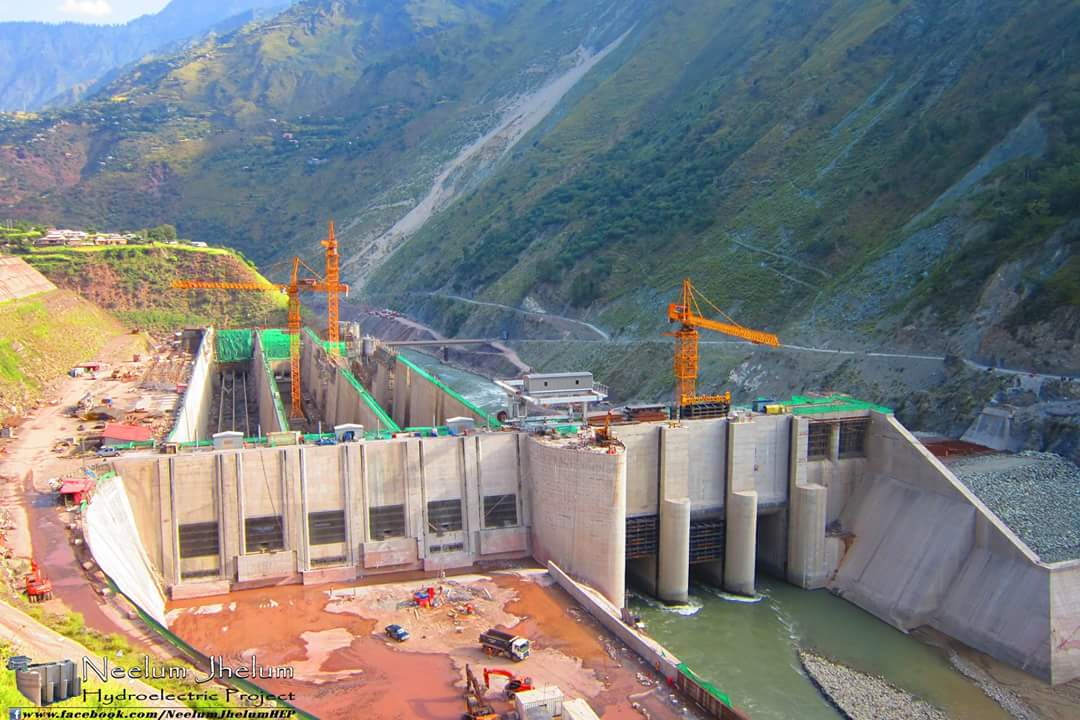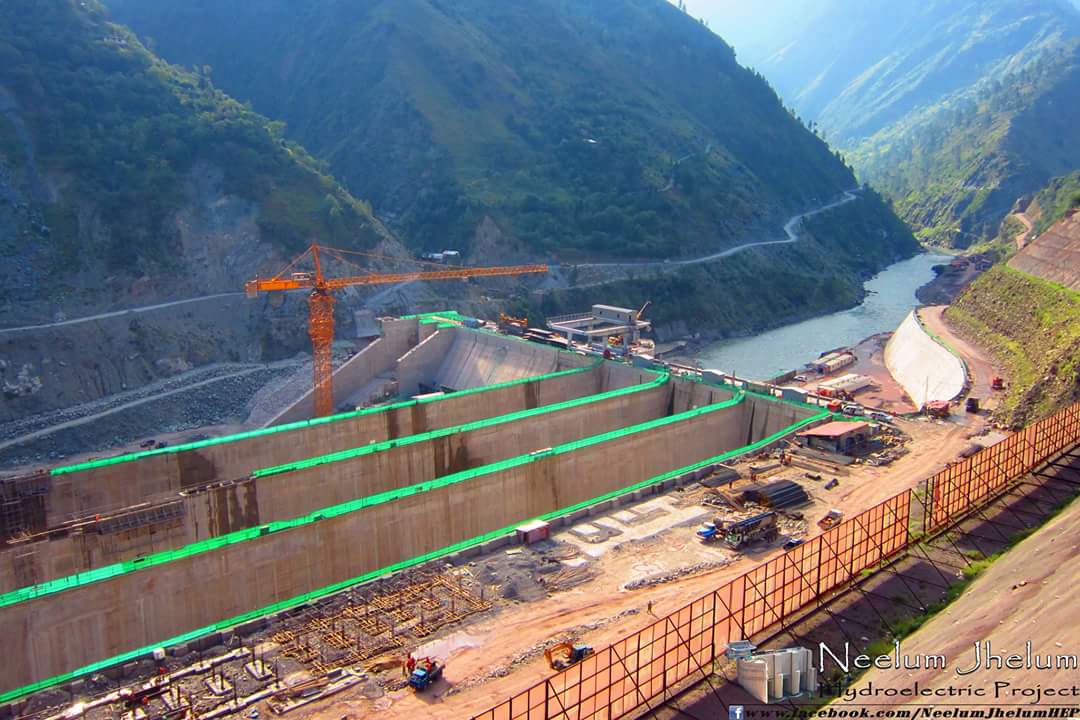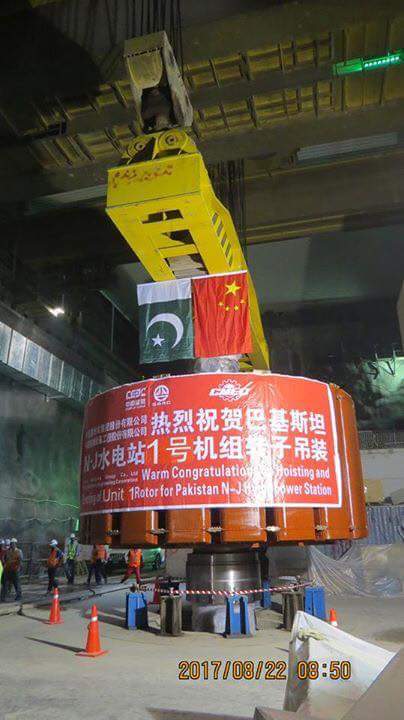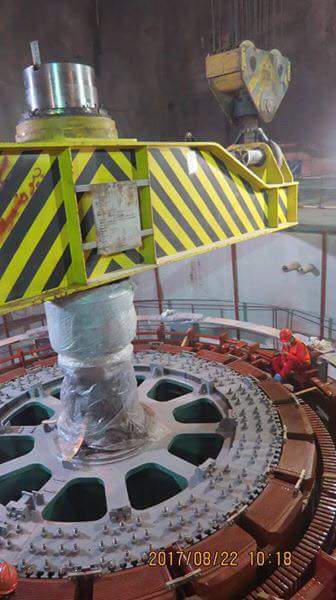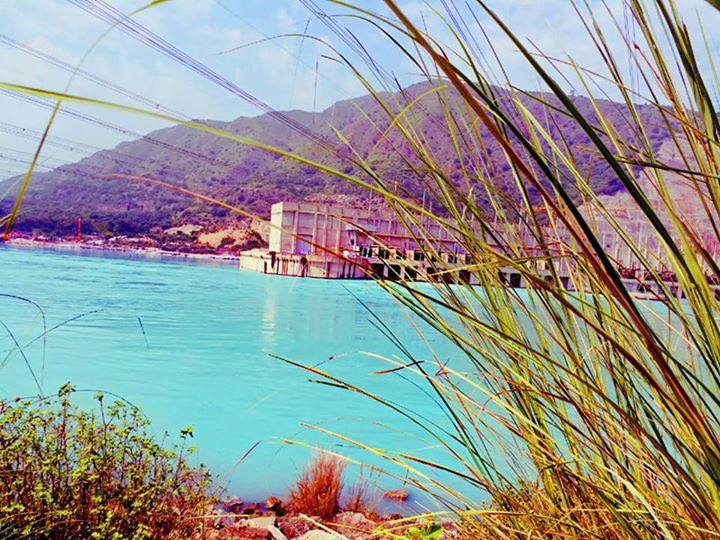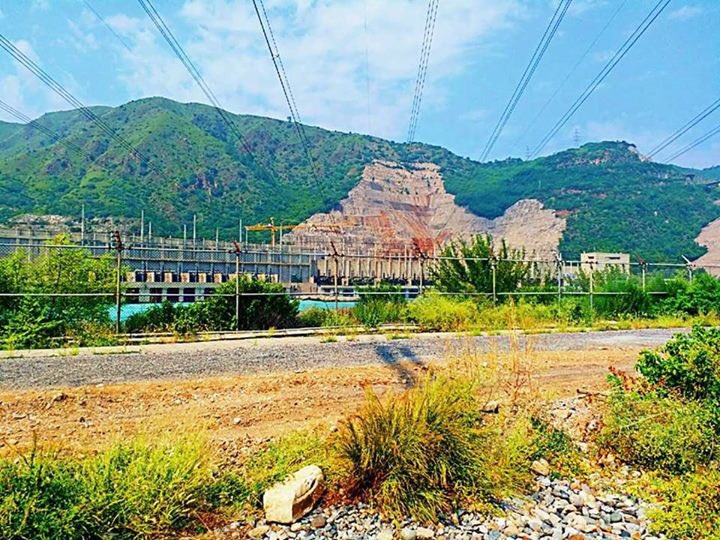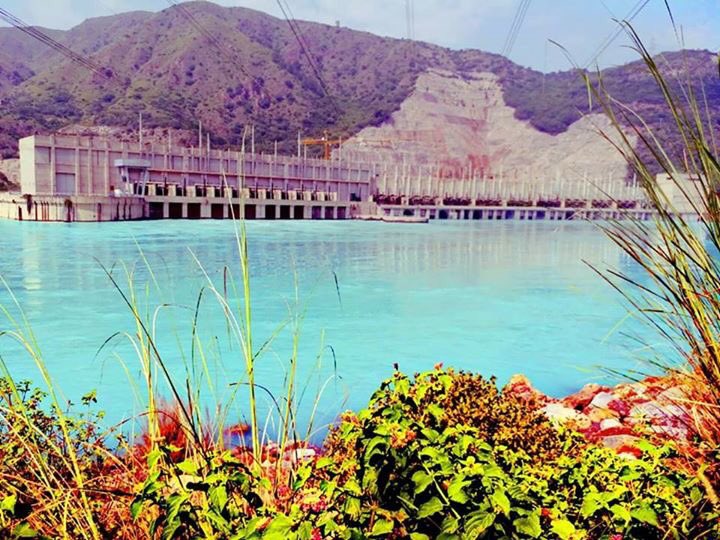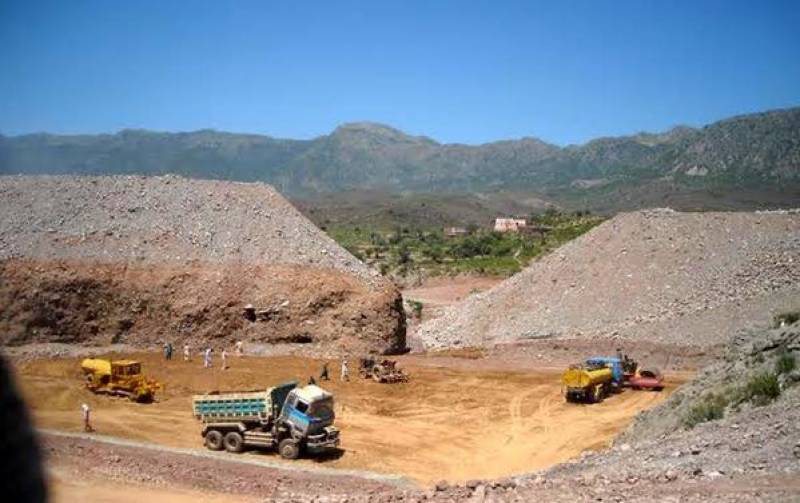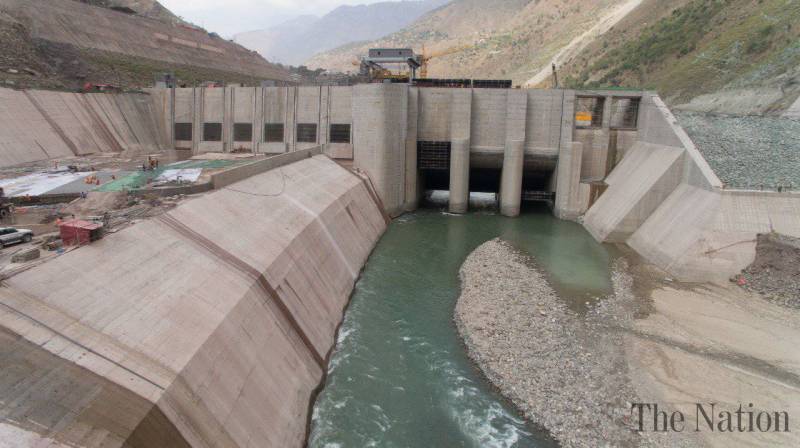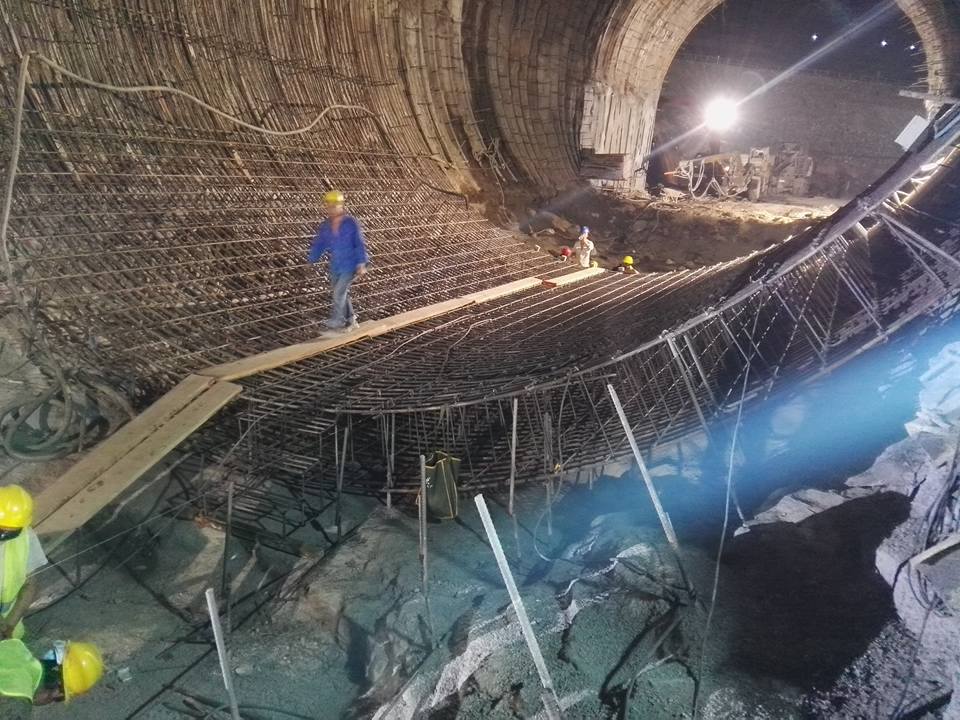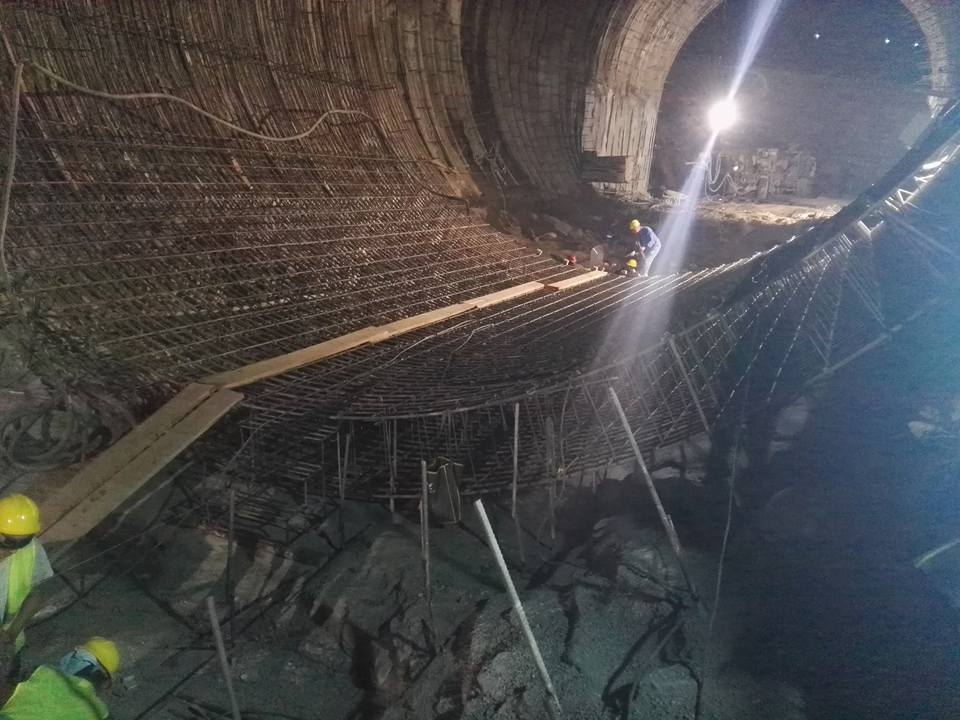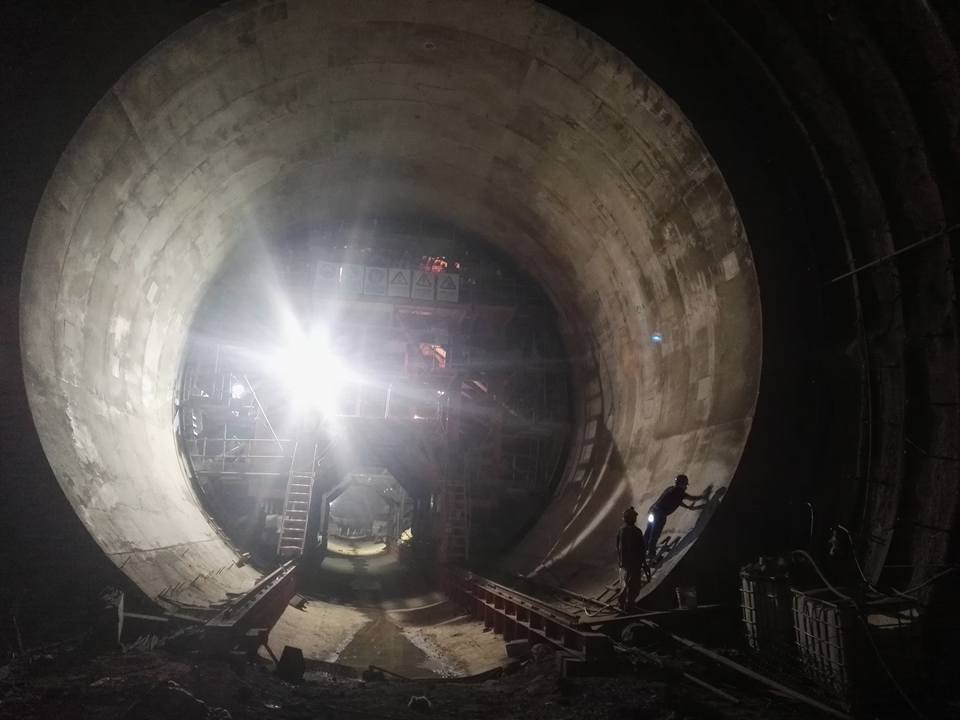ghazi52
PDF THINK TANK: ANALYST

- Joined
- Mar 21, 2007
- Messages
- 101,790
- Reaction score
- 106
- Country
- Location
KALABAGH DAM AND RESERVOIR - A GOLD MINE

Engineer Barkat ALi
Kalabagh Dam is to be an earth fill 265 feet high, with water reservoir capacity of 6.1 MAE over river Sindh, with two spillways for disposal of excess flood water. It will have installed hydel generation capacity of 3600 MGWT of electricity likely @ Rs1.5 per MGWT, equal to 20 million barrels of oil required for thermal generation of power causing a saving of at least Rs100/billion in foreign exchange per annum, and facilitating reduction in power tariffs.
Siltation of Tarbela, Chashma and Mangla Dams reservoirs is fast reducing their water storage capacity which will have adverse effects on water supply for irrigation everywhere. KBD water reservoir will continue with its storage capacity of over 3.2 MAF for more than 100 years. Reduced water supply in downstream areas in Punjab and Sindh will lead to salination of potable water at even lower depths creating shortage of drinking water availability for Punjab and Sindh.
Sindh will be the worst affected area if Kalabagh is not built in the form of reduced water supply for irrigation, leading to fast salination of underground water even at shallow level in addition. Vast areas under irrigation at present may become barren, converting it into desert. On the contrary, if the dam is erected Sindh will get additional 2.257 MAF water from additional storage capacity and save salination of underground water as well.
To offset the looming threat of reduced storage capacity in Tarbela, Chashma and Mangla and for continued and assured adherence to the agreed terms of Water Apportionment Accord and to meet requirements for irrigating new Iands, new storages of water are required to store flood water and also save a major chunk of 30 million MAE flowing into the sea through flow below Kotri Barrage.
Sindh apprehends that canals proposed to be taken off from KBD will result in reduced water supply to Sindh are unfounded. KBD project report does not include any canals from left or right flanks. Notwithstanding, construction of any canals by any province would not increase its share of water. It will continue to be governed by WAA. The apprehensions are therefore baseless.
Excess water due to extreme flood peaks in Indus, Kabul and Swan rivers cause damage up to $20 billion, as in 2010, while shortage of water cuts down production of food, with main sufferer being small land holders. KBD will store flood water and release it when needed for agriculture in Sindh, thus saving the damage due to floods and meeting water required for agriculture and saving salination of ground water at shallow level.
850,000 acres of fertile virgin land in Bannu and Dl Khan, which is up to 150 feet higher than the water level of Indus, can be brought under cultivation; with construction of KBD. Khyber Pakhtunkhwa will be a major loser of this opportunity if KBD is not built. The KBD construction got politicised due to India sponsored lobby. India is itself using water as a weapon against Pakistan by regulating water supply to Pakistan, agreed under Indus Water Treaty signed in 1960.
Hatred between provinces promoted particularly against Punjab by calling it a ‘Punjabi Dam’. India is reportedly spending billions in yearly payments to receptive and approachable elements in Sindh to sustain this opposition.
Sind Graduate Association (SGA), though formed for noble objective of development of Sind, opted for parochial outlook, a war path base on hatred, forgetting that hatred based on emotions retards the pace of improvement, leads to less productive options. In case of KBD, the SGA based its findings on incorrect data. It is difficult to say whether it was deliberate because of India supported lobby or lack of correct information or was due to doubts and misgivings over the effects of a national project because of hatred. The outcome is most unfortunate, likely to rob Sindh of its most likely unbelievable improvement in agriculture. If KBD does not materialise good agricultural land in Sind the province will become barren due to lack of water reservoir and storage and siltuation of Tarbela, Chashma and Mangla Reservoir.
Sindh will in fact be the biggest gainer as under the Water Accord its share was increased to 37pc from 34pc by reducing Punjab share from 40pc to 37pc. Increased water supply due to KBD reservoir will ensure more water for irrigation. Besides 179 miles of river belt in lower Sindh, flowing into the sea remains dry for nearly 8 months. With KBD 5,000 cusecs will in this reach, due to addition of 2.257 MAP in supply to Sindh. It will save land currently under cultivation from turning barren and potable water getting affected by salination at shallow level.
KBD has an edge of duperiority over Bhasha Diamer in many respects, though none is a substitute for the other. Both have to be built as they are complimentary to each other. KBD is the only solution to harness the Monsoon rains flows of Swat and Kabul Rivers that contribute heavily to the flood havoc as in 2010.The Monsoons rains occur downstream of Bhasha Dam and thus the flood water cannot reach Bhasha Dam storage.
KBD is located on the Indus in Mianwali, easily accessible from each side, close to load centre as well as distribution net work of power transmission, 121 miles downstream of Tarbela, while Bhasha Dam site is 197 miles upstream of Tarbela, involving long and difficult access routes, far removed from load centres and difficult transmission corridors through rugged mountains for conveyance of generated power to load centers.
The mean river flow at Kalahagh is 90.00 MAE due to many tributaries and nullahs joining the Indus (Swat, and kurram rivers on the right hand with Siren, Haro, and Soan rivers on the Ieft), while mean river flow at KBD is 50.54 MAE ie 57pc of the flow at KBD site. Besides KBD designed capacity to handle flood water is 20,00,000 cusecs against KBD capacity of 71,3000 cusecs ie only 32pc of KBD.
KBD orifice spillway has crest level at 785 feet which has the potential of flushing of sediments from reservoir, while at BD spillway crest is at 3,758 feet, with full pond level at 3806 feet, no flushing advantage is available due to its height. Capacity will decrease with sediment build up.
For BD 203 miles of access road will have to be upgraded, 59 miles of Karakoram Highway will have to be raised and rebuilt through mountainous ranges, along Indus River. It will by itself be an independent huge project entailing enormous cost for construction, over difficult mountainous terrain repair and subsequent continued maintenance. Time involved in construction of this infrastructure will be an added impediment. 197 miles of transmission lines through difficult mountainous terrain up to Tarbela will have to be erected to connect power generated to main grid, at gigantic cost, while main grid is at a short distance from KBD, entailing negligible cost.
The bed rock on which foundation of dam will have to be taken is 83 feet deep at KBD while it is 171 feet at BD. KBD is almost ready for start of construction. It can be completed in 6 years. BD construction will take about 10 years due to enormous infrastructural provision requirement, and RCC technology for Dam construction. The comparative construction cost of KBD is $6.124 billion, whereas estimated construction cost of BD is $11.178 billion. It does not include transmission line cost. KBD storage capacity for supplementing water for irrigation is 6.1 MAF while BD storage capacity for supplementing water for irrigation is 6.4 MAF. Similarly, Power Generation Installed Capacity of KBD is 3600 MGWT whereas Power Generation Installed Capacity of BD is 4500 MGWT.
BD Dam is not a substitute of KBD. It is a supplement and equally important and necessary to build. It is only a question of according priority to KBD, for it will be completed within six years and benefits in the form of water reservoir and saving of flood water deluge damage will be saved, generating direly needed hydel energy. Project is almost ready for start. No delay is anticipated for provision of infrastructure. Access to project site is already available including power transmission to main grid. KBD on completion will start facilitating availability of resources through saving in financial drain on national economy, to finance BD, which will take about ten years to build and will be helpful in providing much needed water reservoir and hydel generation of electricity.
After signing of Water Treaty in 1960, India has taken effective measures to utilise flashing flood water for constructive purposes, while Pakistan has been neglectful and continues to suffer from flood water devastation. Indian Dams construction has benefitted four provinces by provision of water for irrigation viz Eastern Punjab 4.22 MAE, Rajisthan 8.60 MAE, Haryan 3.50 MAE, Occupied Jammu and Kashmir 0.65 MAE. Bhakra Dam on Sutlej River has storage capacity of 5.60 MAE water irrigating 17 Million Acres, with generation of 1,325 Mgwt of Hydel energy, Pong Dam on Beas River has 5.91 MAE generating 360 Mgwt of energy, Them Dam on River Ravi has storage of 265 MAF with hydel Generation of 600 Mgwt of energy. Many more dams and storage and power generation projects are under construction on these rivers. India is currently producing 25,556 Mgwt of hydel energy and some are under construction such as Tehri Dam 2400 Mgwt, Karcham Wangtoo hydro electrical plant 1000 Mgwt, Nathpa Jhakri 1500 Mgwt and Chamera Dam 1071 Mgwt. Besides India established flood control system and constructed 640 Km long lndra Gandhi Canal to irrigate deserts in north western and western Rajisthan carrying water from Beas and Sutlej Rivers in Punjab.
Pakistan on the contrary constructed only two major reservoirs till 1976 after signing of treaty in 1960. It has not added a single major reservoir to meet escalating irrigating and power needs. 30 MAE is going flowing down to sea from Kotri Barrage, One MAE of water saved and utilised can add $1 to $1.5 billion to the national economy. 22.5 million acres of arable land in Pakistan, approximately 80pc in Sind is undeveloped.
Sind Graduate Association could not see through the vicious game and relied on incorrect and unverified data to draw misleading results, only adding to parochial thinking. It is a sad reality that Sindh will be the biggest loser if KBD is not constructed and on the other hand will be a major beneficiary by getting additional 2.257 MAE of water helpful for irrigating new lands in Sindh and saving major chunks of land currently under irrigation turning into desert due to silting of Chashma, Tarbela and Mangla where water storage capacity is reducing leading to reduced water supply over the years.
On the contrary with construction of KBD Water storage capacity will increase manifold, flood water will not cause damage amounting to $20 billion as in 2010. Moreover, 30 MAE water flowing down to sea below Kotri will be saved because of water storage reservoir availability facilitating water supply regulation. Finally due to regulated water supply and constant flows of water the underground water getting salinated even at shallow level in Sindh will be saved.
Royalty becoming due on power generation from KBD and BD should be used for developing link canals in KPK to irrigate 3,5000 acres of virgin lands in Bannu and Dl Khan and thereafter for maintenance of all these projects.
The writer is a former consultant to the World Bank

Engineer Barkat ALi
Kalabagh Dam is to be an earth fill 265 feet high, with water reservoir capacity of 6.1 MAE over river Sindh, with two spillways for disposal of excess flood water. It will have installed hydel generation capacity of 3600 MGWT of electricity likely @ Rs1.5 per MGWT, equal to 20 million barrels of oil required for thermal generation of power causing a saving of at least Rs100/billion in foreign exchange per annum, and facilitating reduction in power tariffs.
Siltation of Tarbela, Chashma and Mangla Dams reservoirs is fast reducing their water storage capacity which will have adverse effects on water supply for irrigation everywhere. KBD water reservoir will continue with its storage capacity of over 3.2 MAF for more than 100 years. Reduced water supply in downstream areas in Punjab and Sindh will lead to salination of potable water at even lower depths creating shortage of drinking water availability for Punjab and Sindh.
Sindh will be the worst affected area if Kalabagh is not built in the form of reduced water supply for irrigation, leading to fast salination of underground water even at shallow level in addition. Vast areas under irrigation at present may become barren, converting it into desert. On the contrary, if the dam is erected Sindh will get additional 2.257 MAF water from additional storage capacity and save salination of underground water as well.
To offset the looming threat of reduced storage capacity in Tarbela, Chashma and Mangla and for continued and assured adherence to the agreed terms of Water Apportionment Accord and to meet requirements for irrigating new Iands, new storages of water are required to store flood water and also save a major chunk of 30 million MAE flowing into the sea through flow below Kotri Barrage.
Sindh apprehends that canals proposed to be taken off from KBD will result in reduced water supply to Sindh are unfounded. KBD project report does not include any canals from left or right flanks. Notwithstanding, construction of any canals by any province would not increase its share of water. It will continue to be governed by WAA. The apprehensions are therefore baseless.
Excess water due to extreme flood peaks in Indus, Kabul and Swan rivers cause damage up to $20 billion, as in 2010, while shortage of water cuts down production of food, with main sufferer being small land holders. KBD will store flood water and release it when needed for agriculture in Sindh, thus saving the damage due to floods and meeting water required for agriculture and saving salination of ground water at shallow level.
850,000 acres of fertile virgin land in Bannu and Dl Khan, which is up to 150 feet higher than the water level of Indus, can be brought under cultivation; with construction of KBD. Khyber Pakhtunkhwa will be a major loser of this opportunity if KBD is not built. The KBD construction got politicised due to India sponsored lobby. India is itself using water as a weapon against Pakistan by regulating water supply to Pakistan, agreed under Indus Water Treaty signed in 1960.
Hatred between provinces promoted particularly against Punjab by calling it a ‘Punjabi Dam’. India is reportedly spending billions in yearly payments to receptive and approachable elements in Sindh to sustain this opposition.
Sind Graduate Association (SGA), though formed for noble objective of development of Sind, opted for parochial outlook, a war path base on hatred, forgetting that hatred based on emotions retards the pace of improvement, leads to less productive options. In case of KBD, the SGA based its findings on incorrect data. It is difficult to say whether it was deliberate because of India supported lobby or lack of correct information or was due to doubts and misgivings over the effects of a national project because of hatred. The outcome is most unfortunate, likely to rob Sindh of its most likely unbelievable improvement in agriculture. If KBD does not materialise good agricultural land in Sind the province will become barren due to lack of water reservoir and storage and siltuation of Tarbela, Chashma and Mangla Reservoir.
Sindh will in fact be the biggest gainer as under the Water Accord its share was increased to 37pc from 34pc by reducing Punjab share from 40pc to 37pc. Increased water supply due to KBD reservoir will ensure more water for irrigation. Besides 179 miles of river belt in lower Sindh, flowing into the sea remains dry for nearly 8 months. With KBD 5,000 cusecs will in this reach, due to addition of 2.257 MAP in supply to Sindh. It will save land currently under cultivation from turning barren and potable water getting affected by salination at shallow level.
KBD has an edge of duperiority over Bhasha Diamer in many respects, though none is a substitute for the other. Both have to be built as they are complimentary to each other. KBD is the only solution to harness the Monsoon rains flows of Swat and Kabul Rivers that contribute heavily to the flood havoc as in 2010.The Monsoons rains occur downstream of Bhasha Dam and thus the flood water cannot reach Bhasha Dam storage.
KBD is located on the Indus in Mianwali, easily accessible from each side, close to load centre as well as distribution net work of power transmission, 121 miles downstream of Tarbela, while Bhasha Dam site is 197 miles upstream of Tarbela, involving long and difficult access routes, far removed from load centres and difficult transmission corridors through rugged mountains for conveyance of generated power to load centers.
The mean river flow at Kalahagh is 90.00 MAE due to many tributaries and nullahs joining the Indus (Swat, and kurram rivers on the right hand with Siren, Haro, and Soan rivers on the Ieft), while mean river flow at KBD is 50.54 MAE ie 57pc of the flow at KBD site. Besides KBD designed capacity to handle flood water is 20,00,000 cusecs against KBD capacity of 71,3000 cusecs ie only 32pc of KBD.
KBD orifice spillway has crest level at 785 feet which has the potential of flushing of sediments from reservoir, while at BD spillway crest is at 3,758 feet, with full pond level at 3806 feet, no flushing advantage is available due to its height. Capacity will decrease with sediment build up.
For BD 203 miles of access road will have to be upgraded, 59 miles of Karakoram Highway will have to be raised and rebuilt through mountainous ranges, along Indus River. It will by itself be an independent huge project entailing enormous cost for construction, over difficult mountainous terrain repair and subsequent continued maintenance. Time involved in construction of this infrastructure will be an added impediment. 197 miles of transmission lines through difficult mountainous terrain up to Tarbela will have to be erected to connect power generated to main grid, at gigantic cost, while main grid is at a short distance from KBD, entailing negligible cost.
The bed rock on which foundation of dam will have to be taken is 83 feet deep at KBD while it is 171 feet at BD. KBD is almost ready for start of construction. It can be completed in 6 years. BD construction will take about 10 years due to enormous infrastructural provision requirement, and RCC technology for Dam construction. The comparative construction cost of KBD is $6.124 billion, whereas estimated construction cost of BD is $11.178 billion. It does not include transmission line cost. KBD storage capacity for supplementing water for irrigation is 6.1 MAF while BD storage capacity for supplementing water for irrigation is 6.4 MAF. Similarly, Power Generation Installed Capacity of KBD is 3600 MGWT whereas Power Generation Installed Capacity of BD is 4500 MGWT.
BD Dam is not a substitute of KBD. It is a supplement and equally important and necessary to build. It is only a question of according priority to KBD, for it will be completed within six years and benefits in the form of water reservoir and saving of flood water deluge damage will be saved, generating direly needed hydel energy. Project is almost ready for start. No delay is anticipated for provision of infrastructure. Access to project site is already available including power transmission to main grid. KBD on completion will start facilitating availability of resources through saving in financial drain on national economy, to finance BD, which will take about ten years to build and will be helpful in providing much needed water reservoir and hydel generation of electricity.
After signing of Water Treaty in 1960, India has taken effective measures to utilise flashing flood water for constructive purposes, while Pakistan has been neglectful and continues to suffer from flood water devastation. Indian Dams construction has benefitted four provinces by provision of water for irrigation viz Eastern Punjab 4.22 MAE, Rajisthan 8.60 MAE, Haryan 3.50 MAE, Occupied Jammu and Kashmir 0.65 MAE. Bhakra Dam on Sutlej River has storage capacity of 5.60 MAE water irrigating 17 Million Acres, with generation of 1,325 Mgwt of Hydel energy, Pong Dam on Beas River has 5.91 MAE generating 360 Mgwt of energy, Them Dam on River Ravi has storage of 265 MAF with hydel Generation of 600 Mgwt of energy. Many more dams and storage and power generation projects are under construction on these rivers. India is currently producing 25,556 Mgwt of hydel energy and some are under construction such as Tehri Dam 2400 Mgwt, Karcham Wangtoo hydro electrical plant 1000 Mgwt, Nathpa Jhakri 1500 Mgwt and Chamera Dam 1071 Mgwt. Besides India established flood control system and constructed 640 Km long lndra Gandhi Canal to irrigate deserts in north western and western Rajisthan carrying water from Beas and Sutlej Rivers in Punjab.
Pakistan on the contrary constructed only two major reservoirs till 1976 after signing of treaty in 1960. It has not added a single major reservoir to meet escalating irrigating and power needs. 30 MAE is going flowing down to sea from Kotri Barrage, One MAE of water saved and utilised can add $1 to $1.5 billion to the national economy. 22.5 million acres of arable land in Pakistan, approximately 80pc in Sind is undeveloped.
Sind Graduate Association could not see through the vicious game and relied on incorrect and unverified data to draw misleading results, only adding to parochial thinking. It is a sad reality that Sindh will be the biggest loser if KBD is not constructed and on the other hand will be a major beneficiary by getting additional 2.257 MAE of water helpful for irrigating new lands in Sindh and saving major chunks of land currently under irrigation turning into desert due to silting of Chashma, Tarbela and Mangla where water storage capacity is reducing leading to reduced water supply over the years.
On the contrary with construction of KBD Water storage capacity will increase manifold, flood water will not cause damage amounting to $20 billion as in 2010. Moreover, 30 MAE water flowing down to sea below Kotri will be saved because of water storage reservoir availability facilitating water supply regulation. Finally due to regulated water supply and constant flows of water the underground water getting salinated even at shallow level in Sindh will be saved.
Royalty becoming due on power generation from KBD and BD should be used for developing link canals in KPK to irrigate 3,5000 acres of virgin lands in Bannu and Dl Khan and thereafter for maintenance of all these projects.
The writer is a former consultant to the World Bank








